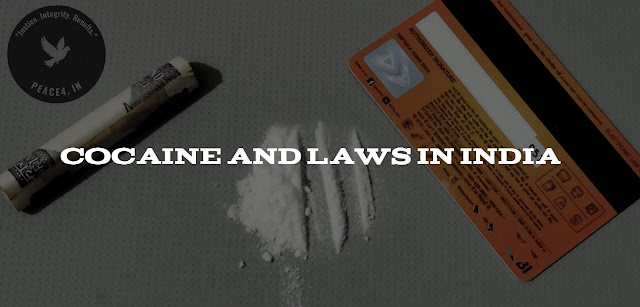Search This Blog
PEACE Legal Information India offers simple, accurate explanations of Indian laws, including workplace rights, cyber law basics, traffic regulations, consumer protection, safety rules, and common legal situations. Our goal is to make legal information accessible, trustworthy, and easy for everyone in India to understand.
Peace Legal Information: Making Law Simple for Every Citizen
Understanding e-Challan Deadlines and Consequences
Detailed information for you regarding the subject, Understanding e-Challan Deadlines and Consequences (India 2025)
Contents
- What Is an e-Challan?
- How to Check Your e-Challan
- e-Challan Deadlines in India
- Consequences of Missing the Deadline
- How to Resolve a Delayed e-Challan
- Your Legal Rights and Protections
- Related Legal Guides
What Is an e-Challan?
An e-Challan is an electronic traffic violation ticket issued by traffic enforcement systems or officers in India. It allows violators to pay fines online, without visiting the traffic police station.
How to Check Your e-Challan
Visit the official e-Challan portal. Enter your vehicle number or challan number to view pending fines.
e-Challan Deadlines in India
Typically, you must pay an e-Challan within 60 days of issuance. After this, the fine may escalate or lead to legal proceedings.
In certain states, unpaid challans are sent to court, and may result in a summons, late fees, or additional penalties.
Consequences of Missing the Deadline
- Increased fine amounts due to penalties
- Vehicle registration or license renewal blocks
- Possible legal notices or summons
- Seizure of vehicle in extreme or repeated violations
How to Resolve a Delayed e-Challan
Log in to the Parivahan portal and pay pending dues. If a challan is marked as 'Court Pending', you must appear in court or consult a traffic lawyer.
Never attempt to bribe or negotiate outside the official process — use only legitimate portals or the court system.
If your e-Challan is showing as pending, unpaid, or court referred, it’s important to take swift and legal action to resolve it.
-
Check the Status Online:
-
Visit the Parivahan e-Challan portal or your state’s traffic police website.
-
Enter your vehicle number, challan number, or driving license number to view any outstanding challans.
-
-
Pay Online if Possible:
-
If the challan is still within the regular payment window and not marked as “Court Pending,” you can usually pay directly through UPI, net banking, or card.
-
-
When It Says “Court Pending”:
-
This means the deadline for regular payment has passed, or the violation requires judicial intervention (e.g., serious offenses or repeat violations).
-
In such cases, you’ll need to appear before the designated traffic court on the mentioned date, or consult a traffic lawyer to represent you.
-
-
Avoid Illegal Shortcuts:
-
Do not attempt to bribe officials or settle matters informally. These actions are illegal and can lead to criminal charges under the Prevention of Corruption Act.
-
Always use official portals, verified payment gateways, or court procedures to close your challan.
-
-
Get Help If Needed:
-
If you’re confused about the process or receive a notice out of the blue, you can contact your local traffic control room or seek advice from a qualified traffic law advocate.
-
Handling a delayed challan responsibly ensures you avoid arrest warrants, license suspension, or vehicle seizure. Keep all digital records and confirmation receipts safe for future reference.
Your Legal Rights and Protections
You have the right to contest false or incorrect challans. Use evidence such as dashcam footage, GPS data, or receipts. File an appeal through the designated traffic authority or local magistrate.
Always retain digital receipts and challan IDs for proof of payment and dispute resolution.
If you believe an e-Challan has been issued wrongly—such as for a violation you didn’t commit or one recorded in error—you are fully within your rights to challenge and contest it under Indian law.
You can:
-
File an appeal with the local traffic department or appear before the relevant magistrate to contest the challan.
-
Present evidence such as dashcam recordings, GPS logs, location-tagged photos, or toll receipts that prove your vehicle wasn’t at the scene or the alleged violation didn't occur.
-
If the challan was auto-generated through AI-based systems or CCTV, you can demand manual review before being penalized.
The Motor Vehicles Act and related traffic laws protect citizens against wrongful prosecution. Authorities are also expected to verify challans before enforcement.
Always save:
-
Digital payment receipts
-
Challan ID numbers
-
SMS or email confirmations
These are essential if there's ever a dispute about whether a fine was paid, wrongly issued, or paid twice.
Additionally, platforms like the Parivahan portal and state traffic police websites often provide options to raise complaints or request clarification for incorrect challans. Make use of these tools promptly, and don’t ignore the notice—even if it's a mistake.
Related Legal Guides
- How to Handle Traffic Police on the Spot — Your Rights and Limits
- Can Traffic Fines Affect Your Job Background Check?
- Understanding Indian Traffic Laws: Your Rights and Legal Remedies
- Traffic Rules for Pedestrians and Cyclists in India
- Can a Learner’s License Holder Drive Alone?
- Who Pays If an Uber/Ola Driver Causes an Accident?



%20Act,%201970.jpeg)






